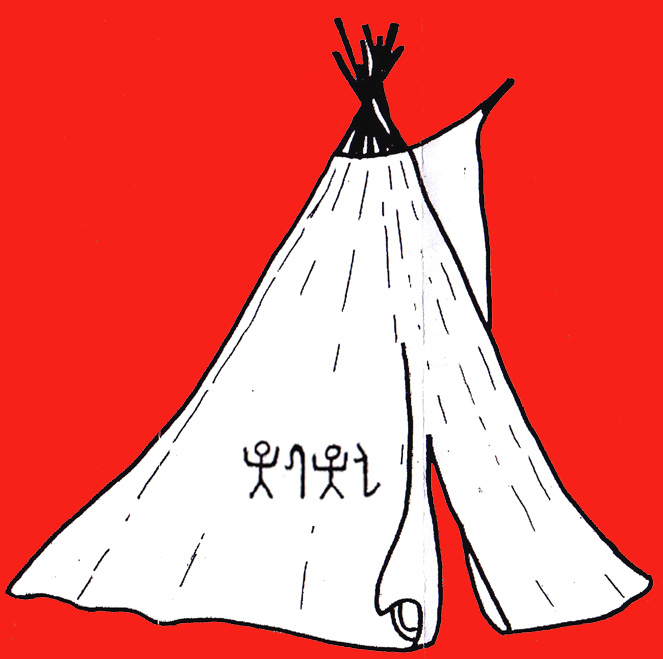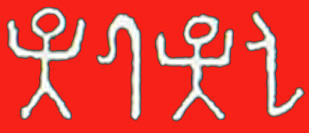
New Light on the Bat Creek Stone

 |
New Light on the Bat Creek Stone |
 |
|
|
||
|
The Bat Creek Stone was discovered in 1889 in Loudon County Tennessee by the Smithsonian institution's Bureau of American Ethnology, while working on Mound Survey Projects, in 1894 project director Cyrus Thomas published a photo of the inscription identifying it as being “beyond question letters of the Cherokee alphabet, said to have been invented by George Guess (or Sequoyah) a half-breed Cherokee. The stone lay basically forgotten in storage at the National Museum of Natural History in Washington D.C. until the 1960's, when a few observers noticed that, if the published photograph is held upside down, several of the letters look more like Phoenician and related Canaanite scripts than like Cherokee, when held in either orientation~ Joseph B. Mahon sent a photo of the stone to professor Cyrus Gordon, which set forth the interpretation as “only for Yahudim” (Jews). The letters have been numbered 1 to 8 which I will refer to for clarification. I have an article from an Atlanta newspaper saying the inscription reads “only for Jehu”, where the seventh letter was considered an Aleph, not too bad of an attempt. J Huston McCulloch and Cyrus Gordon identified the seventh letter as a “Dalet. But both views are mistaken! The seventh letter in the Bat Creek Stone is clearly a Resh, Compare your paleo-Hebrew and Phoenician charts, you'll see what I mean. Now you might be thinking that the seventh letter cannot be a Resh because the first letter was considered a Resh. The first letter is forced into the mold by saying it is a “BACKWARDS” Resh. However this letter is also mistakenly identified. The first letter is not backwards at all! By the way, this is not a Greek inscription where the R looks like a regular P. The first letter is clearly a Qoph in ancient Hebrew, again compare your paleo-Hebrew, Samaritan and Phoenician charts you'll see what I mean!
I realize that this will give the stone a
different reading altogether so that it does not read “Only for Yahudim”,
because there is no Dalet in this inscription. The best I can come
up with
The third letter Lamed is a Hebrew modifier that means “for” or “to”, the latter part letters 4 through 8 would be Yod, He, Waw, Resh, Mem. These are the exact letters that spell “Yehoram” see Strong's Heb.# 3088, originally the name was pronounced Yahuram” meaning Yahuwah raised. The Murashu Texts confirm that it would be Yahuram instead of Yehoram. The Murashu texts are Aramaic texts written in cuneiform script on clay tablets found at Nippur. These texts date back to 464 to 404 B.C.E. and contain many Jewish names transcribed in cuneiform with the vowels. Many of these names contain part of the divine name in the name. In all these names the first portion of the name appears as YAHU and never as YEHO.” Patterns in Jewish Personal Names m Babylonian Diaspora by M.D. Coogan; Journal for the Study of Judaism, Vol. IV, No.2, p. 183f.
So in names that end YHW ( Thus the inscription on the Bat Creek Stone would read “utmost border or end for Yahuram”! The Scripture also has Jehoram for Joram in II Kings 9:15 margin. In Scripture there are two Jehoram's, the one, son of Ahab king of Israel, the other, son of Jehoshaphat (Yahshaphat) king of Judah. It gets kind of confusing sometimes because they both reigned during the same time. See examples in I Kings 1:17& II Kings 8:16 There are 6 Joram’s in the Bible, which probably were originally Yahuram in the fuller form, but got reduced to Yoram by Mesoretic scholars in the Dark Ages. But here is what really gives it away that the Bat Creek Stone does not read “Only for Yahudim”, and I am surprised the scholars didn't catch it. If the Bat Creek Stone did read “Only for Yahudim” (Jews plural) there would have been a Yod between the Dalet and the Mem or between the seventh and eighth letters. In other words when words are in the singular like cherub, seraph, Nephil, Eloah and when they become plural the yodmem are added on the end of the word making them look like cherubim, seraphim, Nephilim, Elohim etc. This Yod is missing in the Bat Creek inscription between the seventh and eighth letters, so it becomes obvious the inscriber did not intend to make this a plural word, therefore “Yahudim” (Jews) cannot be the correct word for the Bat Creek Stone. However, 'Yahuram” fits very nicely.
|
||